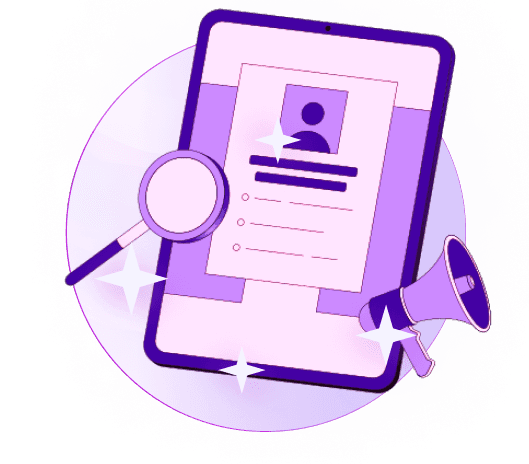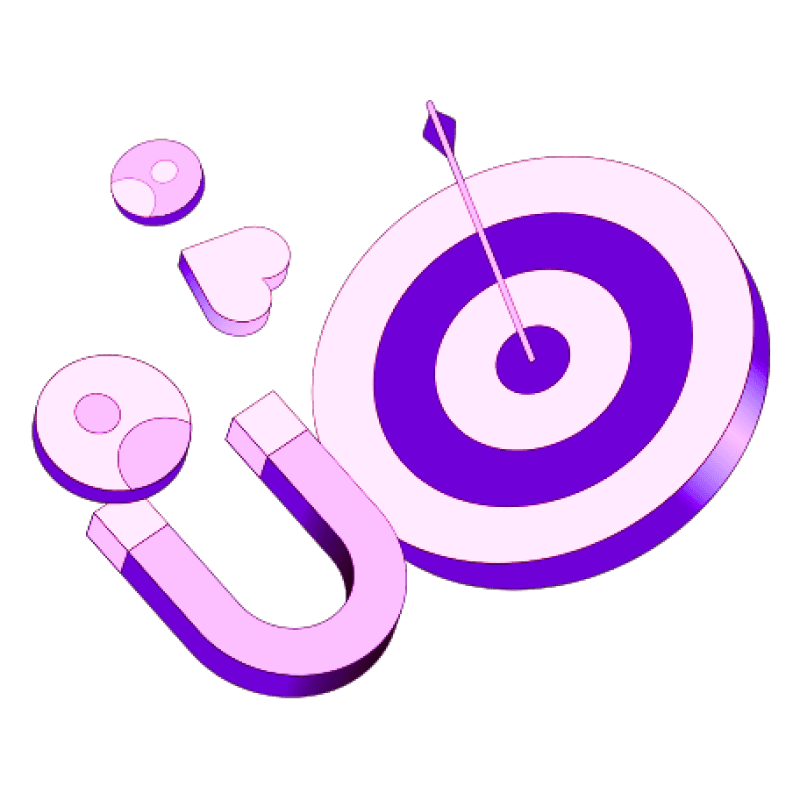Blogs
Articles

How to Create a Sales Enablement Strategy That Actually Works [Expert Guide]
A strong sales enablement strategy creates measurable impact - 65% of sales leaders who outperformed revenue targets have a dedicated sales enablement person or team. This correlation is significant.
The modern selling environment's complexity has made enablement a necessity, not just an option. Sales teams that use enablement content are 58% more likely to outperform their peers. Many organizations still find it hard to set up enablement processes that work, despite seeing clear advantages.
This piece will guide you through building a sales enablement strategy that delivers real results. We'll share proven frameworks, practical tools, and best practices to help you achieve measurable performance gains, whether you're starting fresh or enhancing existing programs.
What is a sales enablement strategy?
Sales enablement strategy gives sales teams the knowledge, content, training, and tools they need to sell better throughout the buyer's trip. This strategy connects sales and marketing teams while making sure every customer interaction creates value and matches business goals.
Why sales enablement matters in modern sales?
Traditional selling methods are not enough in today's B2B sales world. The buying process has changed completely—84% of B2B purchases happen during organizational changes. Modern buyers do their research before they contact sales representatives. They complete 80% of the sales process before the first meeting.
Sales teams must become trusted advisors instead of just selling products. Companies that make their sales enablement work achieve a 49% win rate on forecasted deals, compared to 42.5% for those that don't. Companies with strong enablement programs see amazing results:
32% higher team sales quota attainment
24% better individual quota achievement
23% higher lead conversion rates
Sales enablement changes how revenue teams work by creating predictable, flexible growth and building stronger customer relationships.
Common challenges sales teams face without enablement
Sales representatives face many obstacles that limit their success without proper enablement. Research shows sellers spend just 28% of their time selling. They use the rest of their time on administrative tasks and looking for information.
Content management is one of the most important challenges—81% of sales executives say content search and utilization tops their productivity improvement list. About 25% of sales representatives say they lack proper training. This leaves them unprepared to handle complex sales conversations.
The biggest problem comes from departments that don't work together well. Sales and marketing teams working separately lead to mixed messages, unused content, and poor customer experiences. So, almost half of all sellers (49%) think their current role's skills will become outdated in the next two to three years.
A collaborative effort between departments helps solve these challenges. Sales enablement streamlines processes and makes sure sales representatives have everything they need to create exceptional buying experiences that win business.
Build the Foundation of Your Enablement Plan
A strong foundation supports powerful sales enablement strategy. Three fundamental pillars create a framework that delivers results and sets the stage for long-term success.
Define clear goals and KPIs
Success in sales enablement starts with objectives that line up with your business goals. Research shows that organizations using sales enablement metrics achieve an 11% higher quota attainment. Your plan should include SMART goals (Specific, Measurable, Achievable, Relevant, Time-bound) that reflect your true objectives.
Your key performance indicators (KPIs) should directly show your enablement success:
Sales performance metrics: Pipeline generation, win rates, contract values, deal sizes
Process efficiency: Sales cycle length, content usage and engagement
Team development: Quota attainment, user satisfaction with training
You need to measure your sales enablement success to determine if your efforts produce positive ROI for your organization.
Identify your ideal customer profile and buyer personas
The ideal customer profile (ICP) represents companies that benefit most from your solutions. Your ICP needs company size, industry, geography, budget thresholds, and any legal or service limitations.
Companies consist of individuals, so you should develop detailed buyer personas. These sales-focused personas should present stakeholder-specific business cases that answer vital questions: What keeps this person up at night? What incentives drive their decisions? How does your product solve their specific problems?
Audit your current sales process and tools
Start by reviewing your existing sales process thoroughly. Gather data on revenue, acquisition numbers, retention rates, and conversion metrics. Look for tasks that could be automated, since 86% of reps feel confused about which tools to use for specific tasks.
The core team understands daily challenges better than anyone else. Their feedback combined with customer learning will show critical gaps in your enablement framework that need attention.
Develop and Execute Your Enablement Strategy
You've built your foundation. The next step is to put your sales enablement strategy into action. Getting results requires a systematic approach across multiple areas.
Create a content strategy for sales enablement
Sales representatives spend only 28% of their time selling. They use most of their remaining hours looking for relevant content. A good content strategy starts with a thorough content audit to find what works and what's missing. Your content library should be organized by buyer persona and customer journey stage. This helps reps find what they need quickly.
Your sales enablement content should have:
Internal assets (playbooks, battle cards, sales scripts)
External materials (case studies, whitepapers, product demos)
Email templates that match different sales cycle stages
Make sure your content tackles common objections and has ROI calculators to help close deals more effectively.
Design onboarding and training programs
Traditional onboarding methods need an upgrade to a well-laid-out, continuous learning approach. Research shows employees who go through longer onboarding programs reach full proficiency 34% faster than those in shorter programs. Your onboarding program needs a clear vision statement that shows what success means.
New hires learn better with bite-sized information delivered right when they need it. The "flipped classroom" model works best - sellers do pre-work on their own, which saves classroom time for practice and problem-solving.
Choose the right sales enablement tools and platforms
Your choice of sales enablement technology should merge naturally with existing workflows, especially your CRM. Sales teams use about 10 tools in their sales process, so integration is vital.
Start by identifying which sales enablement areas matter most to your organization - content management, sales intelligence, or coaching. Then assess potential tools based on workflow automation capabilities, customization options, and analytics that show buyer behavior.
Align sales and marketing teams for better collaboration
Companies with strong sales-marketing alignment see 38% higher sales win rates and grow revenue 24% faster. Better alignment starts with regular communication - weekly team meetings, monthly syncs, or quarterly lunch-and-learns where marketing shares insights and tools.
Set up shared definitions for marketing qualified leads (MQLs) and sales qualified leads (SQLs). Create unified dashboards that show the full funnel from lead to closed deal. The RAPID decision-making framework helps define who makes final decisions on projects, which prevents miscommunication.
Want to make your sales enablement strategy stronger? Persana.ai has specialized tools that make content management easier and help teams work better together across your revenue organization.
Measure, Optimize, and Scale
Sales enablement needs more than just implementation - you need to assess and refine it continuously. A robust measurement system will give a strong foundation after your strategy takes off.
Track leading and lagging indicators
The right metrics tell you if your sales enablement initiatives work well. Teams should track both leading and lagging indicators to get a complete view of performance:
Leading indicators predict future success and signal early traction. Sales behaviors, content engagement rates, and training completion percentages fall into this category. These help you adjust quickly before issues impact revenue.
Lagging indicators show past outcomes, usually revenue-related metrics like win rates, quota attainment, and customer churn. These confirm whether your enablement efforts made an impact on business goals.
The numbers tell an interesting story - only 25% of sales organizations measure the specific sales behaviors that drive these outcomes. You'll spot connections between enablement activities and business results by tracking content usage alongside performance data.
Use feedback loops to improve training and content
A structured feedback system will help you improve your sales enablement framework. Regular one-on-one meetings with sales leaders give insights about what works and what doesn't.
On top of that, dedicated Slack channels for topics like competitive intelligence or win/loss information make sense. A core group of sales, customer success, and marketing team members who meet monthly to discuss focused topics are a great way to get different views.
Your feedback should target training effectiveness ("how helpful was this content?") and future needs ("what else would you like covered?"). Team surveys about sales readiness help develop targeted training schedules based on real needs rather than assumptions.
Scale successful strategies across teams
Success replication becomes vital as your sales enablement strategy grows. Pilot programs help test initiatives on a smaller scale, and feedback guides organization-wide implementation.
To cite an instance, see your metrics to find reps with exceptional results, then learn what they do differently. One organization saw high-performing representatives who welcomed new tools become champions. These reps led training sessions and helped peers adopt their best practices.
Quarterly leadership meetings with stakeholders from sales, marketing, and operations help outline progress and share recommendations for systematic scaling. Note that sales enablement needs regular reassessment as your organization expands.
Want tools to measure and scale your sales enablement strategy? Persana.ai offers specialized analytics that identify your most influential content and training initiatives. These evidence-based decisions boost team performance.
Conclusion
Sales enablement is the life-blood of modern sales success, not just another business initiative. This piece explored how a structured enablement approach reshapes the scene of sales performance. It bridges vital gaps between departments and gives teams essential tools to succeed.
The numbers tell a compelling story. Companies with strong sales enablement strategies achieve 49% win rates on forecasted deals compared to 42.5% for those without. Sales representatives who use enablement content are 58% more likely to outperform their peers. These statistics show why enablement should be a top priority in your organization.
Three essential components must work together for sales enablement to succeed. You need a solid foundation built on clear goals, well-defined buyer personas, and a full picture of your process. The next step involves thoughtful execution through strategic content management, detailed training programs, and integrated technology solutions. All but one of these elements require continuous measurement and optimization that scales successful approaches across your organization.
Sales enablement demands ongoing commitment rather than a one-time project. Your strategy must adapt to changing market conditions, buyer priorities, and internal capabilities. Teams that implement the frameworks from this piece spend more time closing deals and building customer relationships instead of searching for resources.

Create Your Free Persana Account Today
Join 5000+ GTM leaders who are using Persana for their outbound needs.
How Persana increases your sales results
One of the most effective ways to ensure sales cycle consistency is by using AI-driven automation. A solution like Persana, and its AI SDR - Nia, helps you streamline significant parts of your sales process, including prospecting, outreach personalization, and follow-up.



